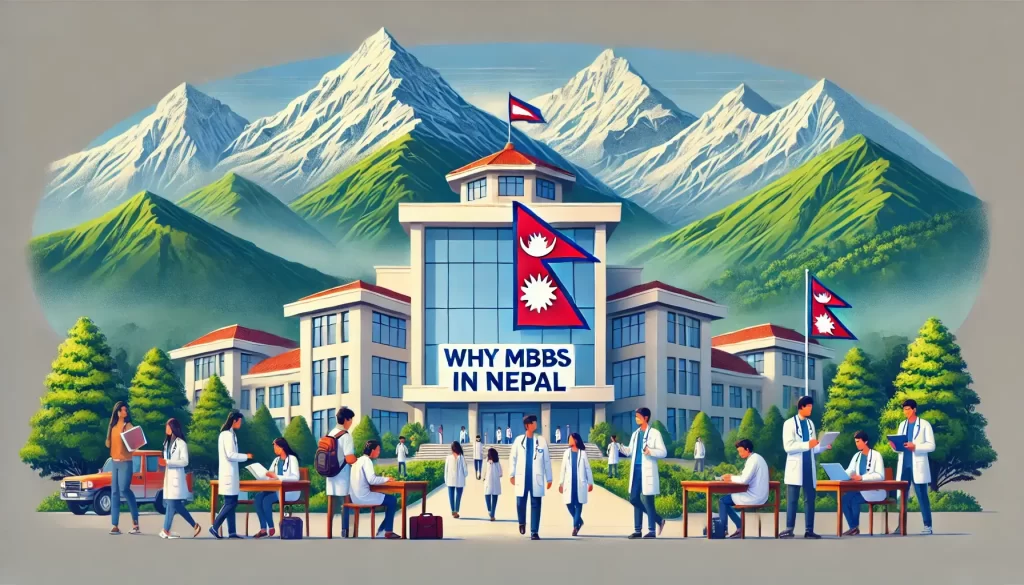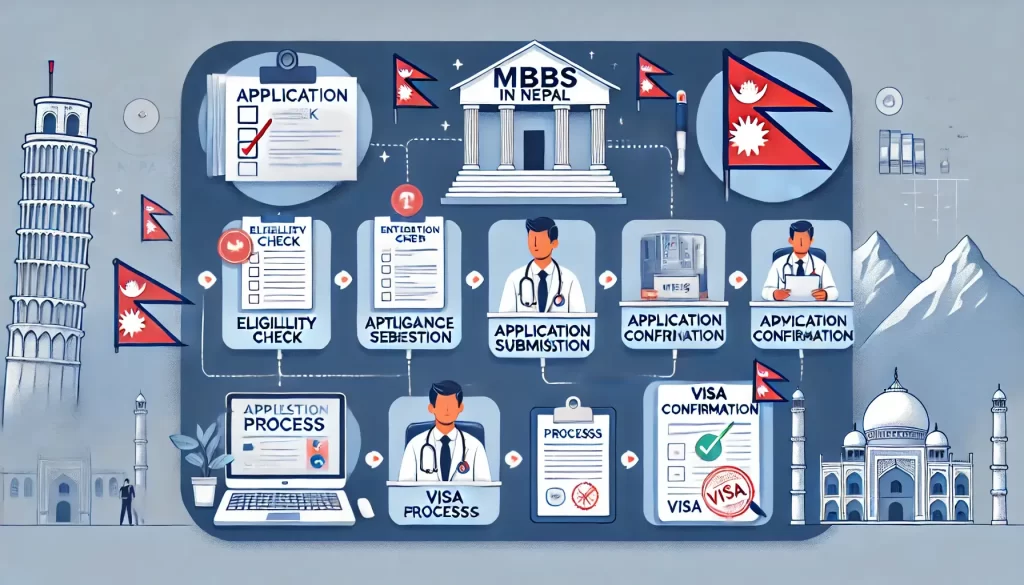MBBS in Nepal
Choosing to pursue MBBS in Nepal has become a popular option for many aspiring doctors from around the world. Nepal offers high-quality medical education with affordable tuition fees, a modern curriculum, and English as the medium of instruction. Its proximity to India and cultural similarities make it an attractive destination, particularly for Indian students.
In this guide, we will explore why you should consider MBBS in Nepal, the cost of studying, the admission process, and frequently asked questions to help you make an informed decision.
Why MBBS in Nepal ?
Affordable Education: Compared to countries like India and Western nations, MBBS in Nepal offers quality education at a fraction of the cost. This makes it accessible to a wider range of students without compromising on the standard of learning.
Recognition and Accreditation: Medical degrees from Nepal are globally recognized and accredited by renowned organizations such as the Medical Council of India (MCI), the World Health Organization (WHO), and the Nepal Medical Council (NMC). Graduates are eligible to practice medicine in various countries after clearing the respective licensing exams.
Modern Curriculum: The MBBS curriculum in Nepal is based on the latest advancements in medical science. It focuses on both theoretical knowledge and practical skills, providing students with hands-on experience in hospitals and clinics.
No Language Barrier: The medium of instruction for MBBS in Nepal is English, which is convenient for international students, especially from India, Bangladesh, and other English-speaking countries.
Cultural Similarities: Nepal shares cultural, religious, and social similarities with its neighboring countries like India, making it easier for students to adapt to the local environment.
Proximity to India: For Indian students, Nepal is easily accessible by road and air, allowing them to visit home frequently.
How Much Does It Cost to Study MBBS in Nepal?
One of the major factors contributing to the increasing number of international students choosing MBBS in Nepal is the affordable fee structure. Here’s a breakdown of the estimated costs:
Tuition Fees: The tuition fee for MBBS in Nepal ranges between ₹40 lakhs to ₹60 lakhs (approx. USD 50,000 to USD 75,000) for the complete course, depending on the university or medical college.
Living Expenses: The cost of living in Nepal is relatively low. On average, students spend around ₹10,000 to ₹15,000 per month on accommodation, food, and other daily expenses.
Miscellaneous Fees: Additional costs such as exam fees, medical insurance, and travel expenses may also apply, but they are generally reasonable.
While the tuition fees are higher than public medical colleges in India, they are still significantly lower than private medical colleges in India or countries like the US and UK.
Cost Breakdown for MBBS in Nepal
| Expense Type | Estimated Cost (INR) | Estimated Cost (USD) |
|---|---|---|
| Tuition Fees | ₹40,00,000 – ₹60,00,000 | $50,000 – $75,000 |
| Living Expenses (per month) | ₹10,000 – ₹15,000 | $125 – $190 |
| Miscellaneous Fees (annual) | ₹50,000 – ₹1,00,000 | $625 – $1,250 |
Eligibility Criteria for MBBS in Nepal
| Criteria | Details |
|---|
| Qualification | 10+2 or equivalent with Physics, Chemistry, Biology |
| Minimum Marks | 50% in PCB (Physics, Chemistry, Biology) |
| Entrance Exam | NEET (for Indian students) / IOM Exam (Nepal) |
| Age Requirement | Must be 17 years or older at the time of admission |
Admission Process for MBBS in Nepal
The admission process for MBBS in Nepal is simple but requires careful planning. Here’s a step-by-step guide:
1. Eligibility Criteria
- Minimum Qualification: Candidates must have completed 10+2 or equivalent with Physics, Chemistry, Biology, and English as core subjects.
- Minimum Marks: A minimum of 50% marks in the qualifying examination is required.
- Entrance Exam: Most universities require candidates to clear the Medical Entrance Exam conducted by the Institute of Medicine (IOM) in Nepal. Indian students may also need to clear the NEET exam.
2. Application Process
- Research and shortlist universities or medical colleges in Nepal.
- Submit an online application through the respective university’s website, providing necessary documents like academic certificates, NEET/IOM scores, and passport-size photos.
3. Entrance Exam and Selection
- After submitting the application, eligible candidates must appear for the entrance examination. Some universities also conduct interviews as part of the selection process.
4. Admission Offer
- Once selected, the university will issue an admission offer. Students need to accept the offer and pay the necessary fees to secure their seats.
5. Visa Process for International Students
- For international students, including Indians, applying for a student visa is mandatory. The respective medical college will provide the necessary documentation to facilitate the visa application.
Top Medical Colleges for MBBS in Nepal
| College Name | Location | Affiliation |
|---|---|---|
| Kathmandu University School of Medical Sciences (KUSMS) | Dhulikhel | Kathmandu University |
| B.P. Koirala Institute of Health Sciences (BPKIHS) | Dharan | Independent, recognized by NMC, WHO |
| Nepal Medical College | Kathmandu | Tribhuvan University |
| Institute of Medicine (IOM) | Kathmandu | Tribhuvan University |
Comparison: MBBS in Nepal vs MBBS in India
| Aspect | MBBS in Nepal | MBBS in India |
|---|
| Tuition Fees | ₹40 – ₹60 lakhs | ₹10 – ₹20 lakhs (public), ₹50 – ₹1 crore (private) |
| Entrance Exam | NEET / IOM | NEET |
| Course Duration | 5.5 years (including 1-year internship) | 5.5 years (including 1-year internship) |
| Medium of Instruction | English | English |
| Cultural Similarity | High | N/A |
| Cost of Living | Lower | Varies (high in metro cities) |
MBBS in Nepal offers a great opportunity for aspiring doctors to receive a world-class education at an affordable cost. With recognized degrees, a modern curriculum, and cultural proximity to India, Nepal is becoming a hub for medical education in South Asia. If you’re looking for an affordable yet quality medical education, MBBS in Nepal could be the right choice for you.


